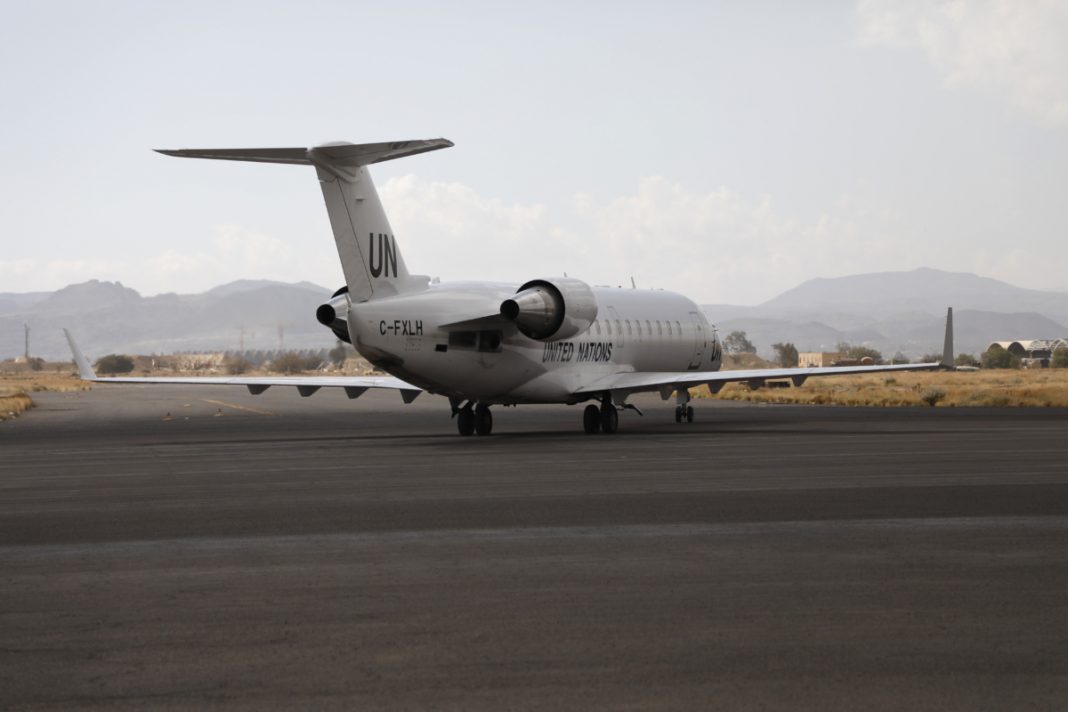The United Nations is made up of 193 member states, and a sprawling array of various programs and funds unofficially referred to as the “UN family.” However, there is no United Nations Airways or FlyUN in the long list of the organization’s specialized agencies. So how come the UN has a fleet of commercial aircraft?

In many areas where the United Nations operates, commercial airlines do not. However, land transportation can be precarious, hindered by challenging security conditions, or poor or non-existent roads. For the UN’s peacekeeping missions, aircraft are most often chartered, although they are often painted with neutral UN colors and symbols, such as the An-72 that crashed in Mali last month.
UN Humanitarian Air Service
Meanwhile, humanitarian staff also needs to reach places where people are most in need. These operations are run by the United Nations Humanitarian Air Service (UNHAS), under the motto “our wings save lives.” In turn, UNHAS is managed by the UN World Food Programme (WFP).
UNHAS provides air transport not only to UN staff but to all of the global humanitarian community. It makes certain that places affected by crises and natural disasters are not left without connectivity. It moves aid workers in, but it can also evacuate parts of affected populations.
On average, the air service agency transports 32,000 passengers and 300 tons of cargo to 323 regular destinations in 16 countries per month. It functions on a first-come-first-served basis and takes bookings and checks you in like any other carrier.

Fleet of twenty-one aircraft
To accomplish this, UNHAS makes use of about 90 aircraft, most of which are chartered. However, the United Nations itself owns, or, in a few cases, leases, a fleet of 21 aircraft, averaging 22.7 years of age as of August 2020.
Most of the UN’s aircraft are smaller passenger planes, which makes sense given the terrain in which they need to operate. According to data from Planespotters.net, the UN has one Bombardier CRJ-100 (currently stored), and seven of the improved efficiency CRJ-200 model. It also has five Embraer; two ERJ-135, and three ERJ-145. Furthermore, it owns six De Havilland DHC-8 turboprops.
These are used in humanitarian efforts, such as a medical mercy-flight out of war-torn Yemen for seven individuals in need of health care in February this year. They can also be utilized to transport smaller contingents of UN representatives visiting missions.

A 767 transporting peacekeepers from afar
Meanwhile, now and then, it is necessary to move larger amounts of people between non-scheduled destinations quickly. For these purposes, the UN used to operate three 737s between 2011 and 2018. Since December last year, however, it leases one narrowbody Airbus A320. For longer-range purposes, it keeps a Boeing 767.
The latter is operated under UN livery by Ethiopian Airlines and is used to transport larger groups of people great distances. For example, it often flies Nepali peacekeepers from Kathmandu to places like the Central African Republic or Congo.
Did you know the United Nations has a small fleet of its own? Let us know in the comments.
[ad_2]
Source link



